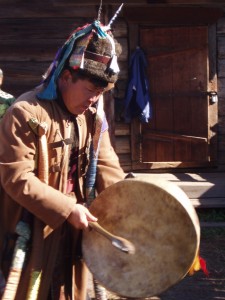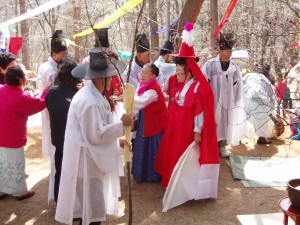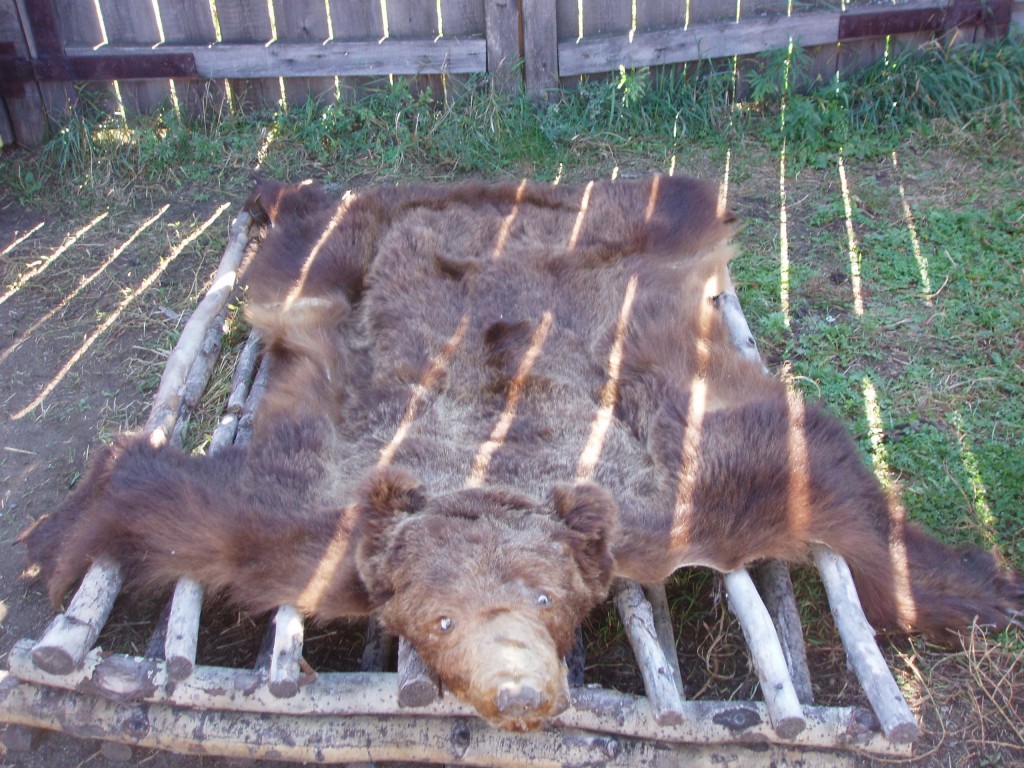Shinto as we know it today is an imperial construct pieced together after 1868 by a ruling clique of Restorationists who promoted a state ideology based around the divinity of the emperor. As such it was conceived as a counterpart to Christianity in the West. Moreover, it differentiated the new regime from the Buddhism and Confucianism that for over 250 years helped prop up the Tokugawa dynasty.

Siberian shaman drumming up the spirits
Traditionalists claim the roots of Shinto lie in Japan’s ancient past. But in A New History of Shinto, Breen and Teeuwen demonstrate that rather than being indigenous, it is by and large an imported and invented religion. This accords with the so-called ‘onion theory’ popular in Shinto studies, whereby if you strip away all the foreign accretions there is nothing left at the core.
My own understanding is a little bit different and based on Gunther Nitschke’s statement in From Ando to Shinto that the rituals and accoutrements constitute a ‘fossilised shamanism’. You find evidence of this throughout Shinto, from early miko mediums to the use of the drum, animal familiars, mythological ‘three worlds’ and symbolic reference to the axis mondi. As such I believe Shinto to belong to a group of East Asian religions which derive from Siberian shamanism.
According to theorists, it was in Siberia that shamanism was born (the word itself derives from the Tungusic language). Others see it mankind’s basic mindset and that in Paleolithic times it was well-nigh universal. Later the ethical religions of the Axial Age incorporated or suppressed shamanism, making Shinto unusual in managing to continue into the modern age with forms that are primal in essence.
It was this aspect that got Joseph Campbell excited. ‘Culturally the blend from these [Ainu beliefs] to the more primitive aspects of Japanese Shinto is very smooth,’ he claimed in The Masks of God. ‘The source land of both peoples was Northeast and North-Central Asia – a zone from which numerous entries into North America were also launched. And since continuous contributions from the same North Asiatic circumpolar shphere likewise flowed into Northern Europe, astonishing affinities turn up throughout the native lore of Japan, touching fields of myth as widely separated as Ireland, Kamchatka, and the Canadian Northeast.’

Korean shaman ceremony
Given that the native peoples of South and North America moved out of the Central Asian heartland (they share the Mongol birthmark), one can suppose that they took their religion with them. And sure enough one finds similarities with Shinto, above all in the primary purpose of the practices – maintaining harmony. Angry spirits, pestilence, and natural disasters etc. are seen as disrupting harmony, and rituals are employed to restore the natural balance between mankind and the spirit world.
With the passage of time differences in practice invariably arose in the various locales, and superficially the customs no longer resemble each other. Geography, culture, and individual initiatives all helped to shape native religions in different ways. But I think one can see the same concerns at their core, and in the coming weeks I’d like to explore the commonalities in a series of cultural comparisons, beginning first of all with the Toltecs of Mexico.

Great Bear Spirit, common to both Buryat and Ainu cultures

I’m not sure where you are getting your info, but great topic.
I needs to spend some time learning much more or understanding
more. Thanks for magnificent information I was looking for this info for my mission.